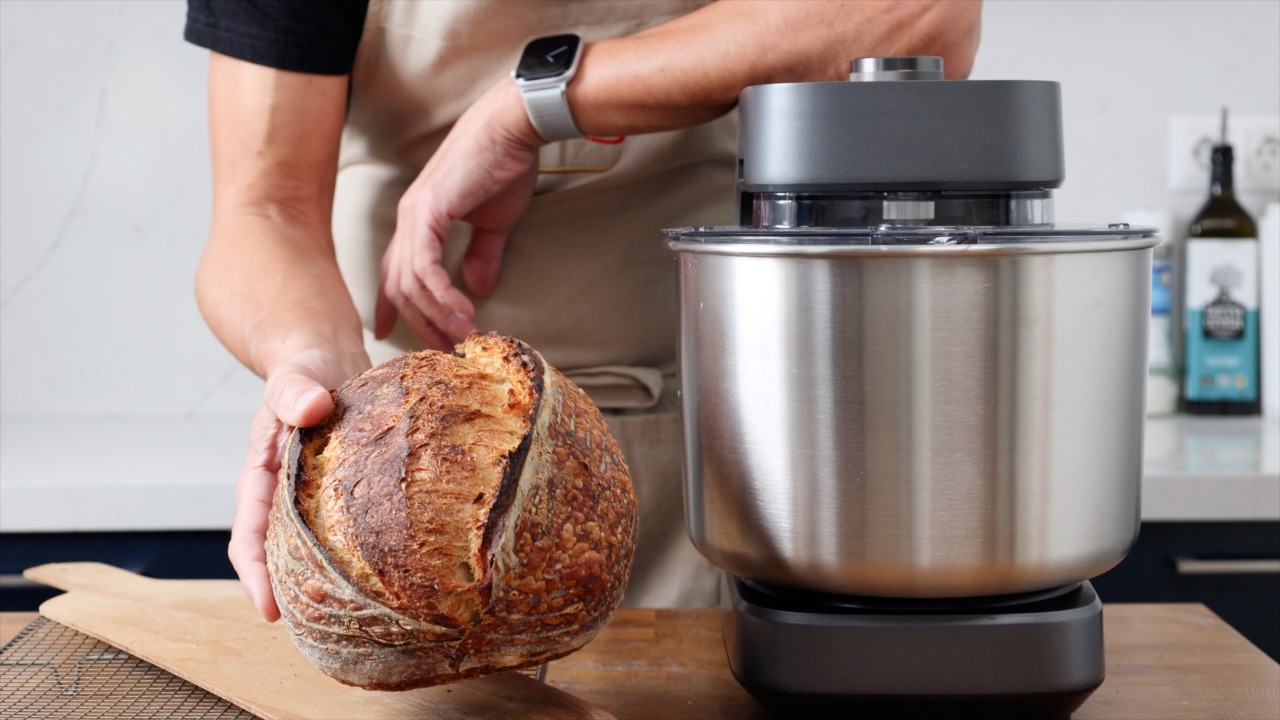How Long Does Sourdough Bread Last?

I bake sourdough regularly and I want to avoid waste at all costs. Along the way, I have discovered what works and what doesn’t. I’ll share my tips on the best way to store sourdough and a plan on the best way to eat it too.
Sourdough bread will keep well for up to 3-5 days at a moderate room temperature of 18-20°C or 64-68°F. The warmer and more humid the conditions become, the more chance the sourdough has of spoiling.
Does sourdough bread go mouldy?
Yes, sourdough bread can go mouldy if stored in a plastic bag or container in hot and humid conditions with no airflow, especially if it hasn't been allowed to cool properly after baking. While this may not happen immediately you may notice mould growth around day three if the conditions aren't favourable.
Mould growth can be accelerated in hot and humid conditions. If you don’t have a cool place to store your sourdough make sure it has good airflow.
Does sourdough bread last longer than regular bread?
Sourdough will generally last 2-3 days longer than a home-baked regular loaf. Although adding ingredients like butter and olive oil can preserve the shelf life of regular loaves.
Shop-bought regular loaves may well outlast a home-baked sourdough as they are normally made with ingredients that preserve the bread.
How do I store sourdough bread?
Whichever method you choose to store your sourdough bread it is crucial that you let it cool down completely first. During the cooling process, the steam will escape improving the keeping quality.
Storing sourdough bread in the open air
On the first day, I leave my sourdough completely uncovered to retain its crunchy crust. If I cut the loaf open I leave it on my breadboard with the cut side facing downwards to stop it from drying out.

Storing sourdough bread in a plastic bag
On the evening of the first day of baking, I pop my sourdough bread in a plastic bag to trap the moisture. At moderate temperatures, the sourdough will store extremely well like this. The crumb remains nice and soft.
Storing sourdough bread in a paper bag
This is a good solution for storing the sourdough on days one and two but after that, I would opt for a plastic bag so that the loaf retains some moisture and doesn’t dry out.
Storing sourdough bread in the fridge
You can store sourdough in the fridge but it will need to be covered properly, I’d suggest a ziplock bag or a large plastic food container with a tight-fitting lid. If left uncovered the fridge will dry the sourdough out.
Even if the sourdough has been covered well it will most likely be hard when you remove it from the fridge. At this stage, it is probably best used for toast or making grilled sandwiches.
I’d use the fridge as a last resort, sourdough will keep just fine at room temperature if covered properly and for longer storage, you can freeze it.
Storing sourdough bread in the freezer
Sourdough bread freezes really well. Slice the loaf and place pieces of non-stick baking parchment between each slice. Place them in a ziplock bag and into the freezer. The parchment will stop the slices from sticking making it easy to remove individual slices as you need them.
The slices can be left to defrost or toasted from frozen. You can dice them up and roast them in the oven to make amazing croutons. This method is the king of convenience.
You can freeze a whole loaf of sourdough in a zip lock bag. When it’s time to use, the loaf can be defrosted In the bag. Reheat the sourdough in an oven that has been preheated to 150C (300F) for ten minutes covered with a large pan or wrapped in silver foil. Remove the pan (or foil) and leave the loaf to bake until the crust is nice and crispy.
Sourdough will keep for a long time in the freezer but I’d suggest eating it within two months to get the best out of the loaf.
Read my blog and watch my video on the two best ways to freeze and reheat sourdough.

My rule of thumb for eating sourdough
Day 1: I eat my sourdough bread fresh making the best of the soft crumb and crunchy crust, I eat it plain or dip it in Greek extra virgin olive oil. It makes the perfect doorstep sandwich too!
Day 2: The crust normally softens and loses its crunch and the crumb becomes a little chewier. The sourdough can still be used fresh but as it’s lost a little moisture it toasts beautifully. It’s at this stage that I like to lightly toast the sourdough, leave it to cool slightly, rub it with garlic, drizzle with extra virgin olive oil and sprinkle with salt. The perfect accompaniment to a Mediterranean meal!
Day 3: We are in toasting territory. It’s great for breakfast with butter, jam, honey, and all of that good stuff. But I like to break out the cast iron pan and make some grilled sandwiches. In the summer I like to cube the sourdough and sauté it in olive oil with garlic, it makes the best croutons!
Day 4: If I’ve got any left at this point I make French toast for brunch or a Panzanella or Dakos salad in the summer for lunch. In the winter it’s great for making Ribollita.
Check out my Sourdough Panzanella Salad recipe
Having a plan on how to use the loaf of sourdough really helps to keep waste to a minimum and there are some fantastic recipes.
Have you ever wanted to bake sourdough but always seem to be too short on time, or perhaps the process seems a little too daunting?
If that’s the case try this simple recipe which is easy to fit into a busy day.
I’ll be sharing my summer favourites over the coming months so stay tuned.
If you enjoyed this blog and would like to support ongoing content creation and help keep the website ad-free, you can click below to make a contribution.
As an Amazon Affiliate, I may earn a commission from qualifying purchases


